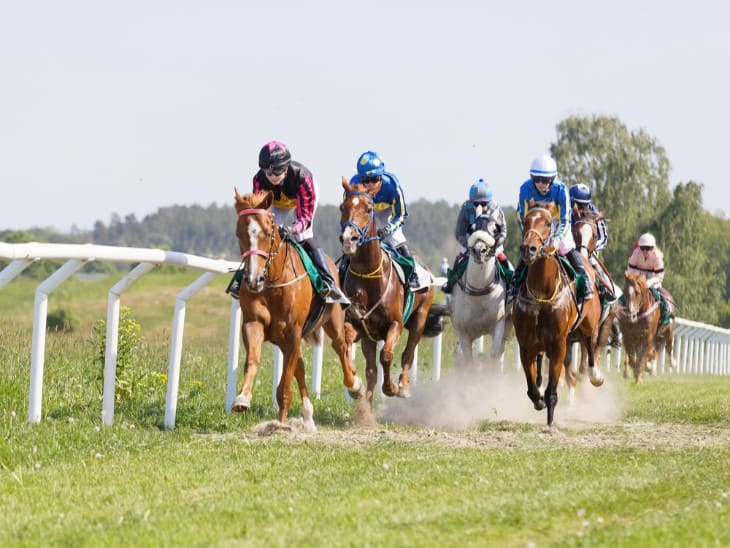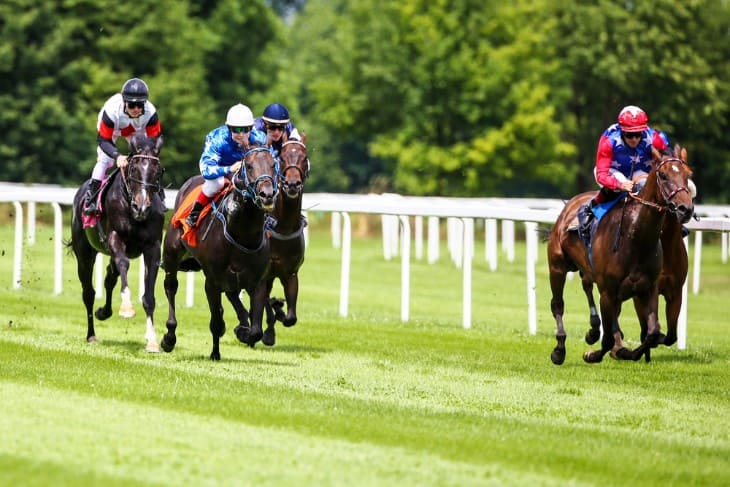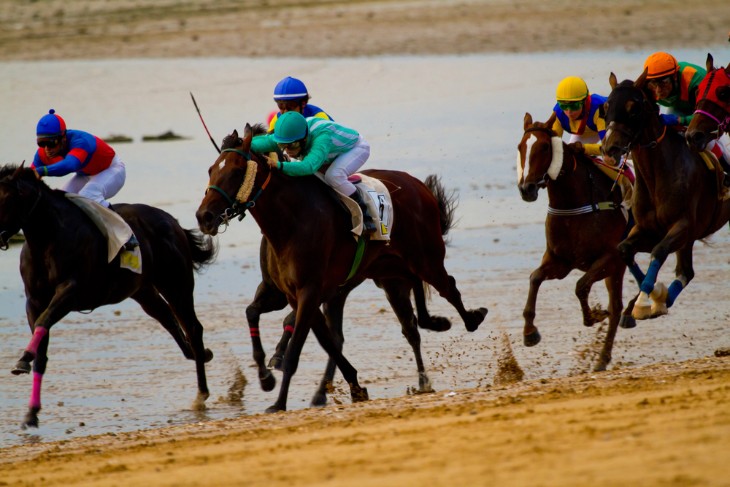Horse racing is an ancient sport with many races, each with diverse hurdles and thrills. Steeplechasing and hurdling are characterised by their dynamic nature and the particular skills required by the rider and horse. This article will explore what differentiates hurdlers from steeplechasers concerning their speeds, training programs, and thrilling experiences for spectators.
Introduction to Hurdling and Steeplechasing
Many types of horse racing worldwide exist, but hurdling and steeplechasing are two of the most captivating. They involve horses jumping over barriers but differ in regulations and challenges associated with respective events. For instance, the barriers in hurdle races are lower than those used in steeplechase. These distances range between 2 and 3.5 miles long for shorter races. There is a need for fast speed when it comes to hurdling so that you can jump without knocking down any obstacle.
On the other hand, the obstacles encountered in steeplechasing, such as fences, water jumps, or ditches, have higher heights than those found in hurdle racing, making it more challenging than hurdling. Mainly, a cross-country race is about 2.5-4.5 miles long. In contrast, others may be shorter or longer regarding distance covered, meaning there must be speeded-up actions and high endurance among horses used to cover these grounds efficiently with less time wastage possible on handling different difficulties experienced throughout this contest.
Both races aim at finishing first without hitting any obstacles. In contrast, diversity in the kind of jumps and distances means that training and strategies during races between hurdles differ widely from those applied during steeple chase contests. Even though both are equally exciting to follow, they examine the varying qualities of both riders together with their horses.
Speed Dynamics in Races
Comparatively speaking, hurdlers generally finish their races quicker. This is because hurdle races are shorter and, therefore, less difficult. In such cases, horses can easily maintain their paces without slowing down for each jump.
In contrast, steeplechasers may be as swift as hurdlers on flat ground, but they have more obstacles to slow them down. Barriers in steeplechase contests are higher and more solid than those used in hurdle races; moreover, they also entail additional hurdles like water jumps or ditches. Because of this, they need to protect their bodies while steering them across these obstacles safely at a slower pace instead of running speedily all through, which would lead to exhaustion before crossing the finishing line.
Consequently, steeplechase races take longer and, therefore, call for some considerations about endurance besides speed. The runners cannot run at full speed throughout the race; they must save some energy, especially for an impressive final lap. Such thoughtful pacing is essential in steeplechasing, adding a dimension of strategy.
Though hurdlers tend to be faster due to the nature of such races being run over short distances, steeplechasers balance both quickness and stamina by taking part in more challenging courses that require various skills to be displayed. The main point here is that both types need speed; however, it should be noted that the challenges faced and techniques applied by participants differ widely.

The Challenge of Obstacles
- Hurdling is a Game of Speed: Hurdles in horse racing are low barriers, typically about 3.5 feet tall, that can be easily knocked down if a horse hits them. This design allows the race to proceed much faster since if the horses touch any hurdle at all, they may still maintain their speed over it. Hurdling emphasises dashing and leaping over each barrier without breaking stride.
- Steeplechase is All About Accuracy: Steeplechase races have higher and sturdier fences than hurdles. The fences are not collapsible, meaning horses must approach them more carefully and precisely. This dramatically affects the pace of the race as horses slow down to jump these more challenging obstacles safely. In addition, these jumps, such as water jumps and ditches, make steeplechasing complex since they require different jumping techniques from the riders and horses.
- Impact on Race Strategy: The obstacles found in hurdling or steeplechasing will always affect how every race is run. In hurdling, for instance, most strategies aim at maintaining high speed while getting past hurdles without losing any momentum at all. However, in steeplechasing, what comes into play more is maintaining stamina during the entire race, thereby picking instances where acceleration or conservation makes sense. This means that obstacle navigation becomes an integral part of racing tactics.
Both hurdling and steeple-chasing challenges test the agility, speed, and intelligence of jockeys and their mounts. While hurdles allow for a faster, more fluid racing style, steeplechase obstacles demand careful management and strategic planning, thus making them unique for participants and viewers.
Training/Preparations
Training programs for hurdle races and those related to steeplechases focus on unique aspects needed in each discipline, among others. In the case of hurdle racing, the training aims to boost speed and agility, while in the steeplechase, it is intended to promote endurance. Over obstacles, horses are trained to negotiate hurdles quickly and smoothly. As a part of this program, horses do a lot of speed work in preparation for their races. The exercises are shorter but more intense, making the horse's reflexes sharper and capable of speeding up or slowing down rapidly.
On the other hand, steeplechase training focuses on stamina and power building (Miller et al., 2010). With long distances between jumps and more complex obstacles in this race type, they need enough energy to last during the entire race period. Long jump sessions are conducted with different types of barriers incorporated into them to improve endurance levels. This helps enhance its ability to navigate obstructs when racing over extended distances. Moreover, trainers also teach their animals how to conserve their power while running so that they can stay strong throughout.
Additionally, steeplechasers often train on actual steeplechase courses to become familiar with jumps and terrain encountered during competitions. This practical experience is essential because it increases the confidence levels of horses and riders who might be competing.
Consequently, hurdling and steeplechasing training are very rigorous and specialised because they seek to prepare horses adequately for such sports. However, despite requiring similar attributes like speed and agility, these two disciplines vary in emphasis.
Jockey's Techniques
- Hurdle Races Positioning: The jockeys in hurdle races usually concentrate on sustaining a leading position throughout the race. This plan enables them to control the pace and field from the front. By staying close or just behind the leader, the riders make it easy for their horses to see each jump, minimising the chances of accidents. In addition, this strategy helps them to dictate the speed during races by making tactical bursts at crucial stages to break away from rivals.
- Energy Saving Tactics in Steeplechases: In steeplechase competitions, jockeys have a more conservative approach, which involves running their horses at a moderate pace during the initial and middle sections of the race. It is essential as these races are run over longer distances with demanding obstacles such as large fences and water jumps. Thus, they need to know when to hold back and when they should encourage their horse, hence saving energy for a strong finish and avoiding wasting control of stamina too fast since early exertion may render the horse incapable of negotiating later obstacles safely.
- Alterations Depending on Track Conditions: Jockeys in both race types must be adaptable enough to change their strategies depending on track conditions and how other racers are racing. Weather changes like rain or mud can significantly affect why this is happening, for example, how one approaches every obstacle; therefore, being observant or alert to these conditions will enable one to pick up on any changes that occur within other competitors' steps; sometimes, this makes a difference between victory and failure.
Jockeys have a significant influence on both hurdling and steeplechasing outcomes. Considering such challenges and competition involve good decision-making based on events during the game, horses' capabilities, amongst others v, are essential for those who want success in such sports.

Spectator Appeal
Hedge races and steeplechasing competitions draw large crowds due to their speed, technique, and suspense features, making them entertaining for the audience. In particular, hurdle races are exhilarating as they are fast-paced. It is splendid athleticism when horses race towards hurdles only to leap across them gracefully and nimbly. The races often have close finishes and numerous lead changes from beginning to end, making them attractive.
On the other hand, steeplechasing has more difficult jumps with high fences and water obstacles. These jumps not only test the ability of horses to jump but also provide critical moments which can change the whole course of the race. Few things in racing generate more excitement than a horse with perfect timing leaping over a steeple or kilometre-long hurdle, while seeing a horse stumble or fall elicits gasps from spectators, thus heightening emotions at this time. When it comes to anticipation, steeplechase races lasting longer bring along excitement associated with uncertain endings.
These events are memorable because of both racing types' visual splendour and the natural beauty of racetracks often set in picturesque locations. Indeed, whether it is about a people-packed atmosphere, nail-biting competition among riders, or simply celebrating an earned victory, these sports appeal to fans and individuals who need a thrilling day out.
Historical/Cultural Relevance
Hurdling and steeplechasing have rich historical and cultural roots in the UK, reflecting the nation's deep affinity to horse racing. This started as a form of racing where people would jump over objects within a specified distance, an impromptu cross-country race between church steeples that was then christened steeplechase. This race involved riders navigating various terrains and natural obstacles, so it was about speed, endurance, and agility. Gradually, such challenging races metamorphosed into the structured sport we see today with fixed courses and jumps.
The development of hurdle races originated from a need to prepare horses for the most strenuous demands posed by steeplechasing. It allowed horses to perfect their jumping skills over lower obstacles, enabling them to be more comfortable when facing higher fences and intricate problems in steeplechases. Hurdling is now established as its own distinct and popular category of racing, characterised by its fast-paced nature that appeals to both fans and participants alike.
Both sports have become essential parts of British culture, as exemplified by celebrated international racing festivals that attract thousands of visitors from around the globe. Cheltenham Festival and Grand National are not mere horse races; they are significant social events which feature some of Britain's finest equestrian talent while celebrating centuries-old traditions in the country's sporting history. While these events help keep the historical importance of these sports alive, they are also instrumental in maintaining their cultural significance, thus bringing together individuals from diverse backgrounds who enjoy this thrilling equestrian contest.
Through continued popularity, we are in traditional contests, and hurdling and steeplechasing preserve an essential element in Britain's sporting heritage. They celebrate the timeless attraction and thrill behind horse racing, making it one of the favourite pastimes for many.
In Summary
Speed is a characteristic specifically for hurdlers, whereas their counterparts' abilities include speed, durability, and agility. These two types of races differ in equine athleticism and tactics, offering a wide range of experiences for the participants and onlookers. The world of horse racing is always full of suspense and shows unparalleled sporting excellence, whether you like swift, strategic hurdling races or enduring fascinating steeplechases.








